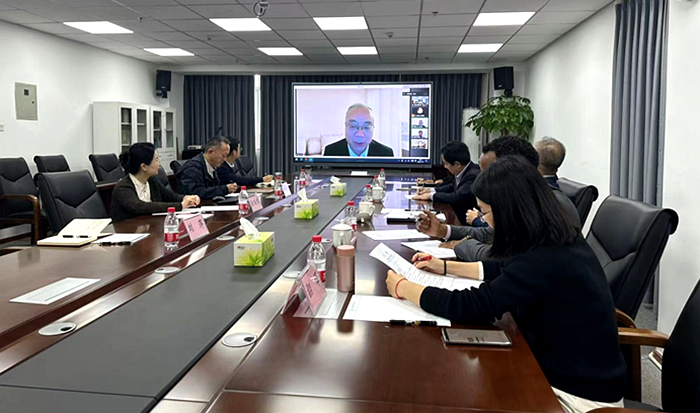The mechanistic influence of nitric oxide on water lettuce treatment of swine wastewater under copper stress was investigated
Recently, the innovation team at livestock and poultry pollution prevention and control division of the Agricultural Environmental Protection Institute's team unveiled the mechanistic influence of nitric oxide as a signaling molecule on water lettuce treatment of swine wastewater under copper stress. This discovery provides a theoretical foundation for enhancing the purification efficacy of swine wastewater by strategically regulating nitric oxide concentrations. The findings have been published in the Journal of Cleaner Production.
Water lettuce is an efficient hydrophyte widely employed in deep purification and treatment processes for swine wastewater due to its nitrogen and phosphorus removal capabilities. However, residual heavy metals like copper often hinder water lettuce's treatment effectiveness through oxidative damage. Previous studies have suggested that nitric oxide can alleviate heavy metal stress as a signaling molecule. Nevertheless, further investigation is required to understand its impact on water lettuce's ability to treat wastewater under heavy metal stress.
The results demonstrated that nitric oxide could mitigate oxidative stress caused by high concentration copper (2~4mg/L), but exacerbate oxidative stress induced by low concentration copper (1mg/L). Further analysis revealed a significant correlation between increased tolerance to copper and enhanced antioxidant levels as well as transport alterations. Additionally, nitric oxide regulates water lettuce's capacity to treat copper by promoting oxidation resistance, facilitating copper transport, enhancing dissolved organic matter binding, and improving nutrient absorption. An appropriate amount of nitric oxide can enhance water lettuce's tolerance towards divalent cupric ions. This study contributes to a deeper understanding of the pivotal role played by nitric oxide in plant-based livestock and poultry wastewater purification processes.
This research was supported by the National Key Research and Development Program and the Science and Technology Innovation Project of the Chinese Academy of Agricultural Sciences.
Link to the original paper: https://doi.org/10.1016/j.jclepro.2023.138680
Contact: yp15926@163.com

-
 Dec 15, 20232023 International Cooperation Work Conference of CAAS Held in Beijing
Dec 15, 20232023 International Cooperation Work Conference of CAAS Held in Beijing -
 Dec 12, 2023Symposium Marking the 10th Anniversary of TYSP held at CAAS
Dec 12, 2023Symposium Marking the 10th Anniversary of TYSP held at CAAS -
 Dec 12, 2023Vice Prime Minister of Malaysia Visited CAAS
Dec 12, 2023Vice Prime Minister of Malaysia Visited CAAS -
 Dec 08, 2023South-South and Triangular Cooperation Division (PST), Food and Agriculture Organization (FAO) Visited Biogas Institute of Ministry of Agriculture and Rural Affairs (BIOMA)
Dec 08, 2023South-South and Triangular Cooperation Division (PST), Food and Agriculture Organization (FAO) Visited Biogas Institute of Ministry of Agriculture and Rural Affairs (BIOMA) -
 Dec 06, 2023Global Tea Research Leaders Forge Paths of International Cooperation Held in Hangzhou
Dec 06, 2023Global Tea Research Leaders Forge Paths of International Cooperation Held in Hangzhou
